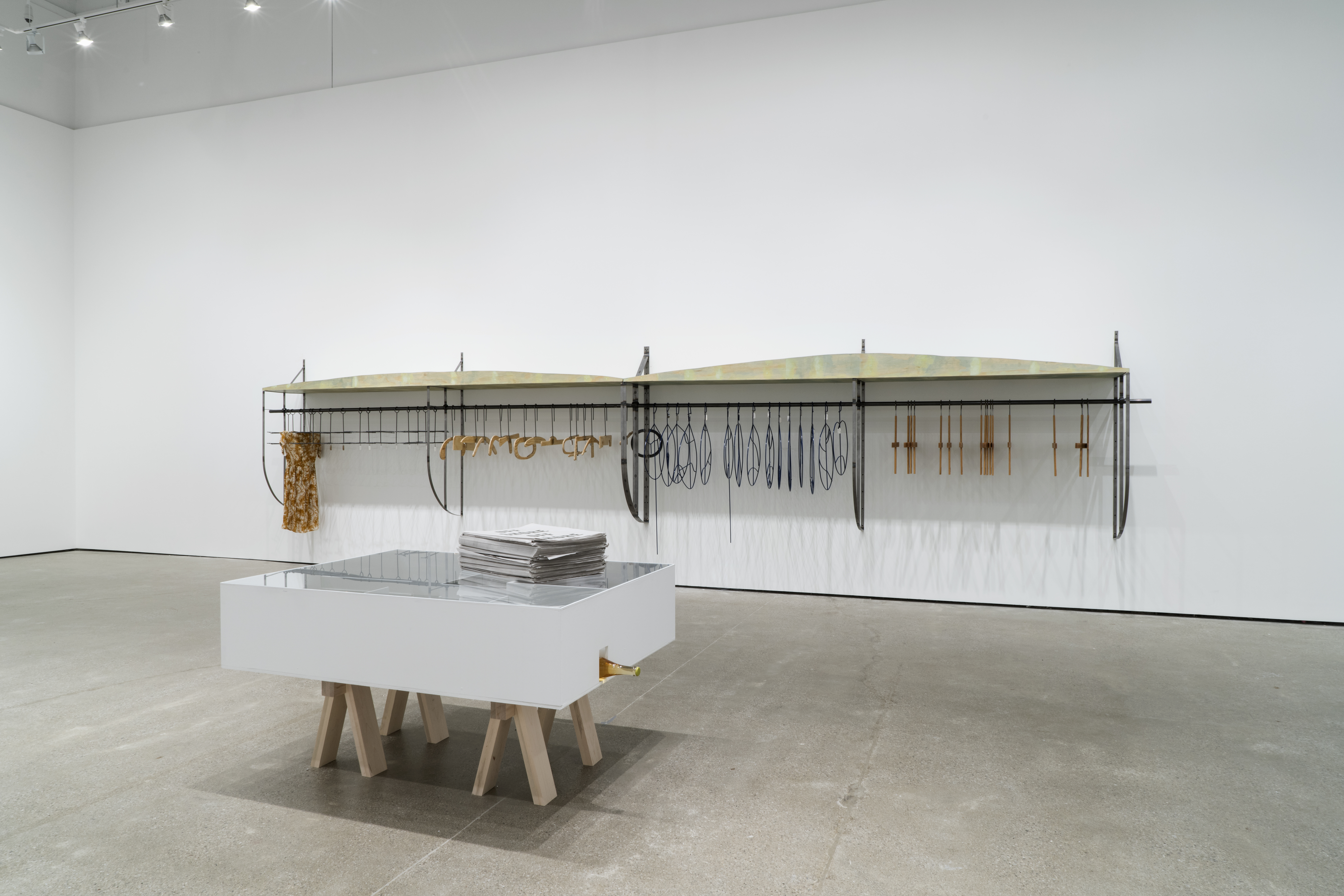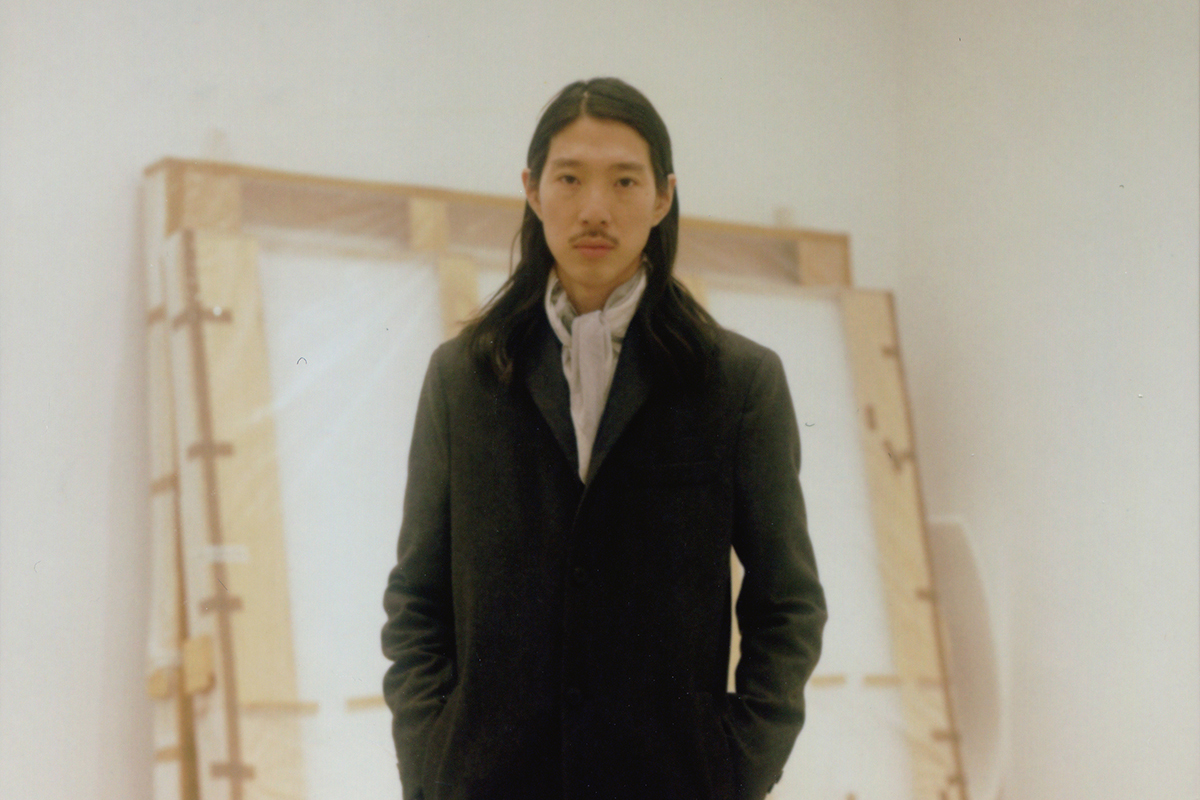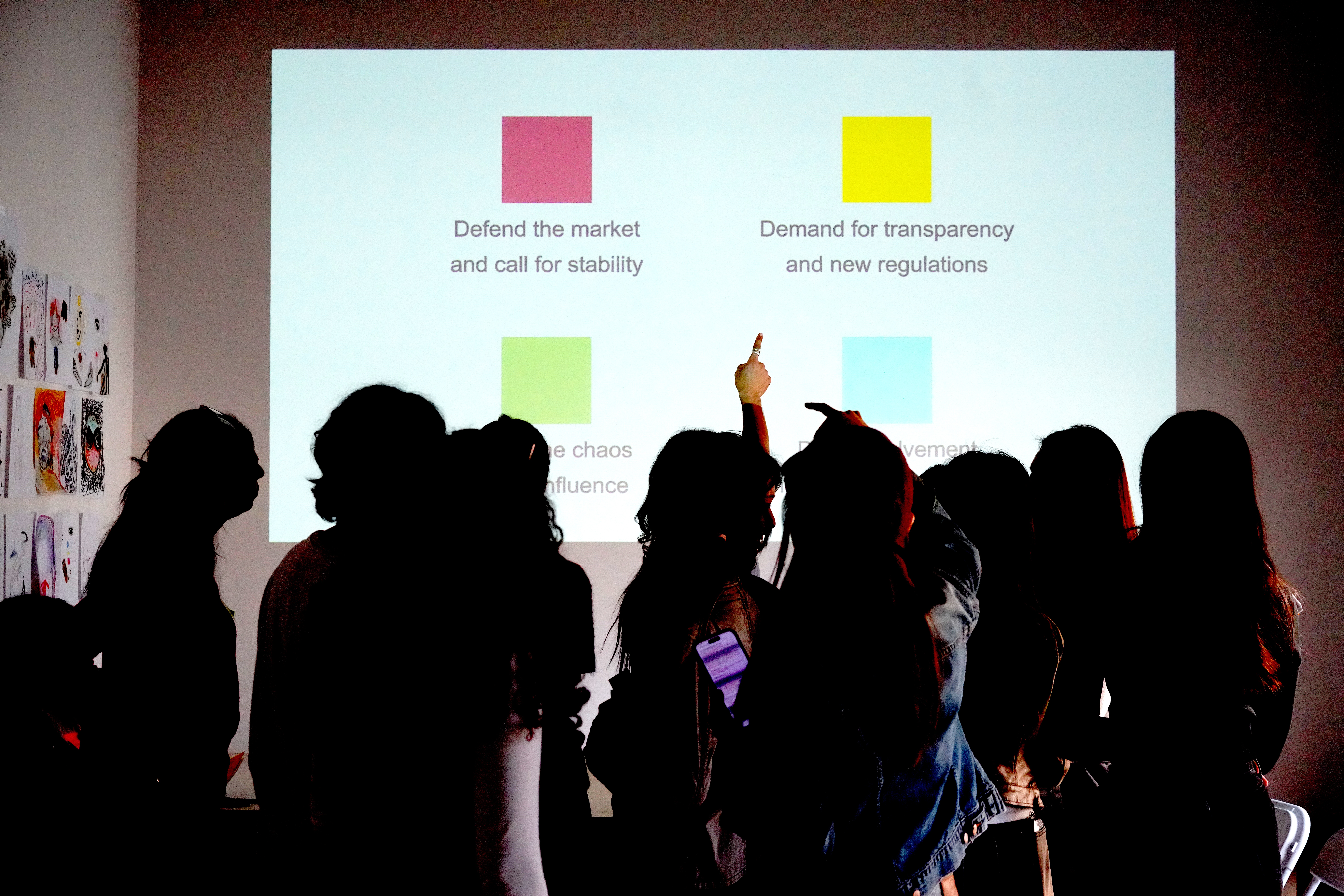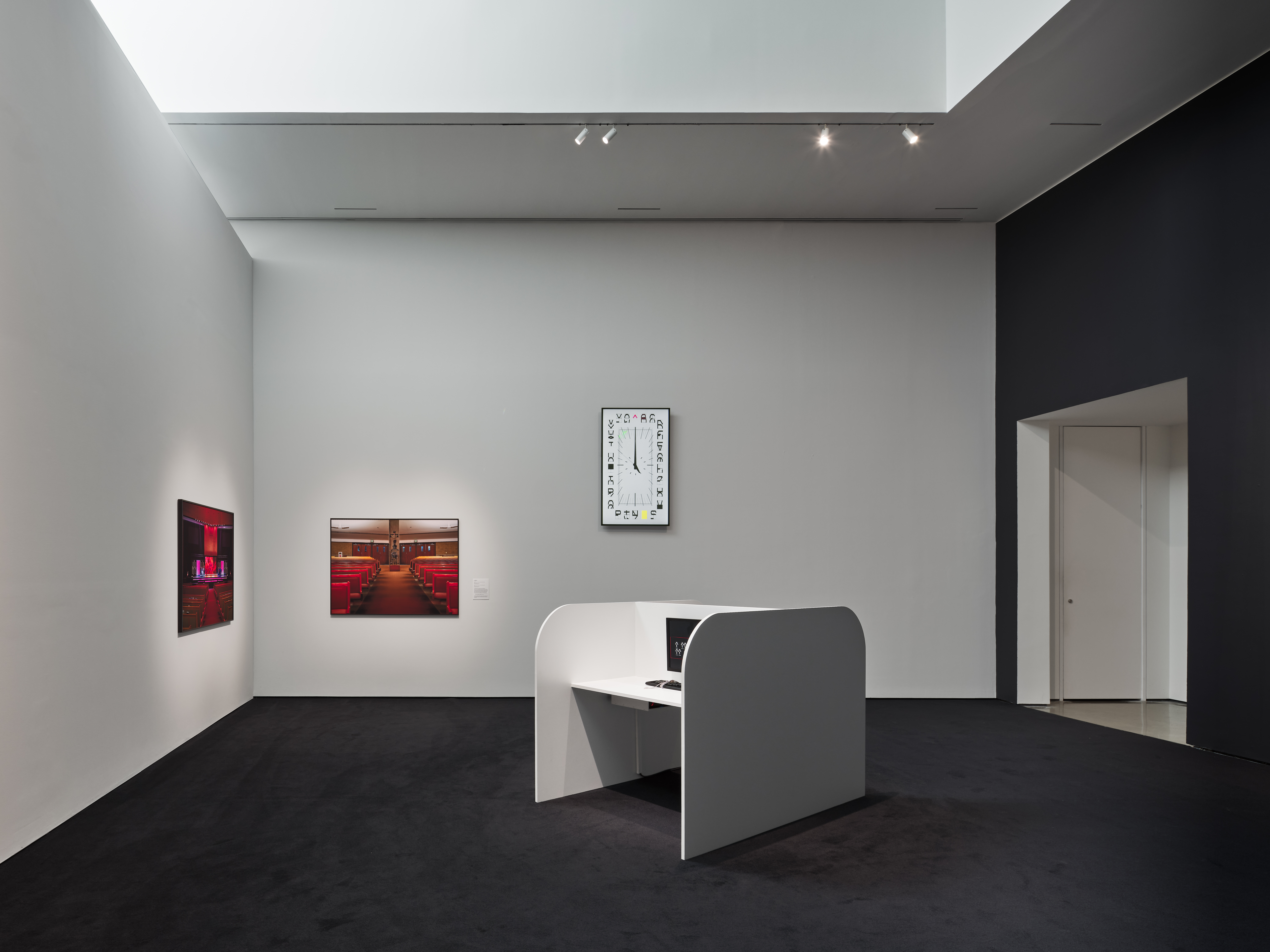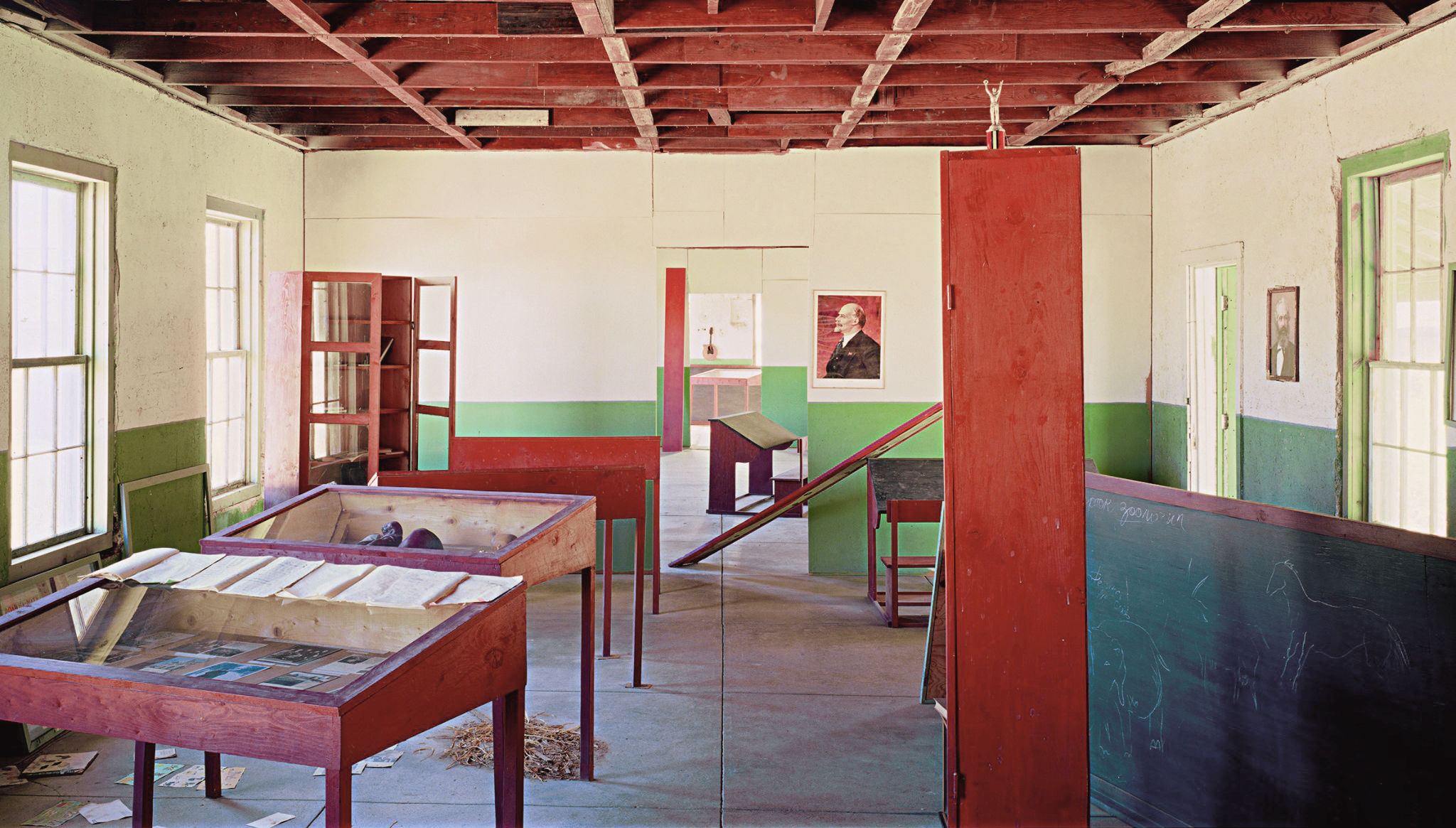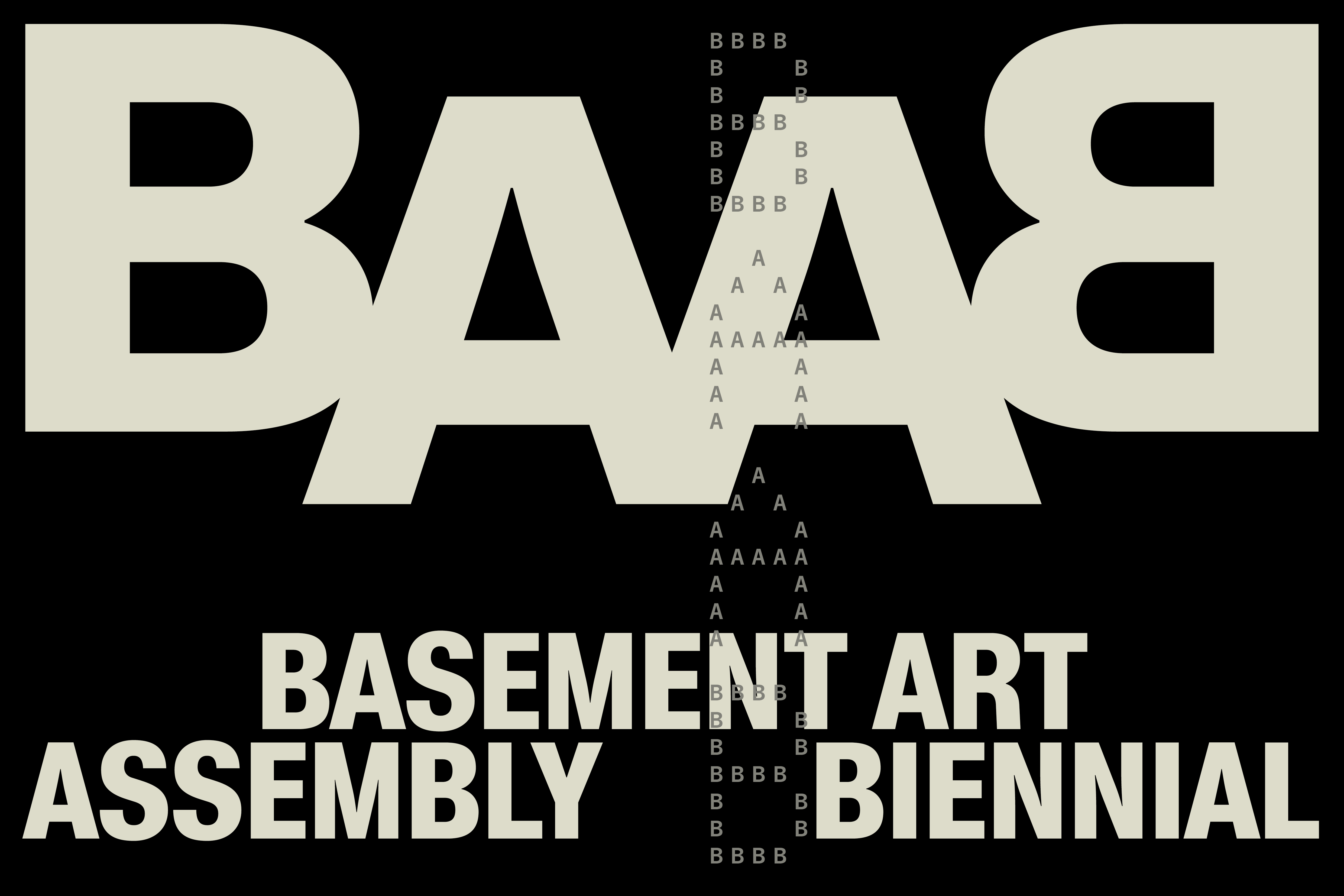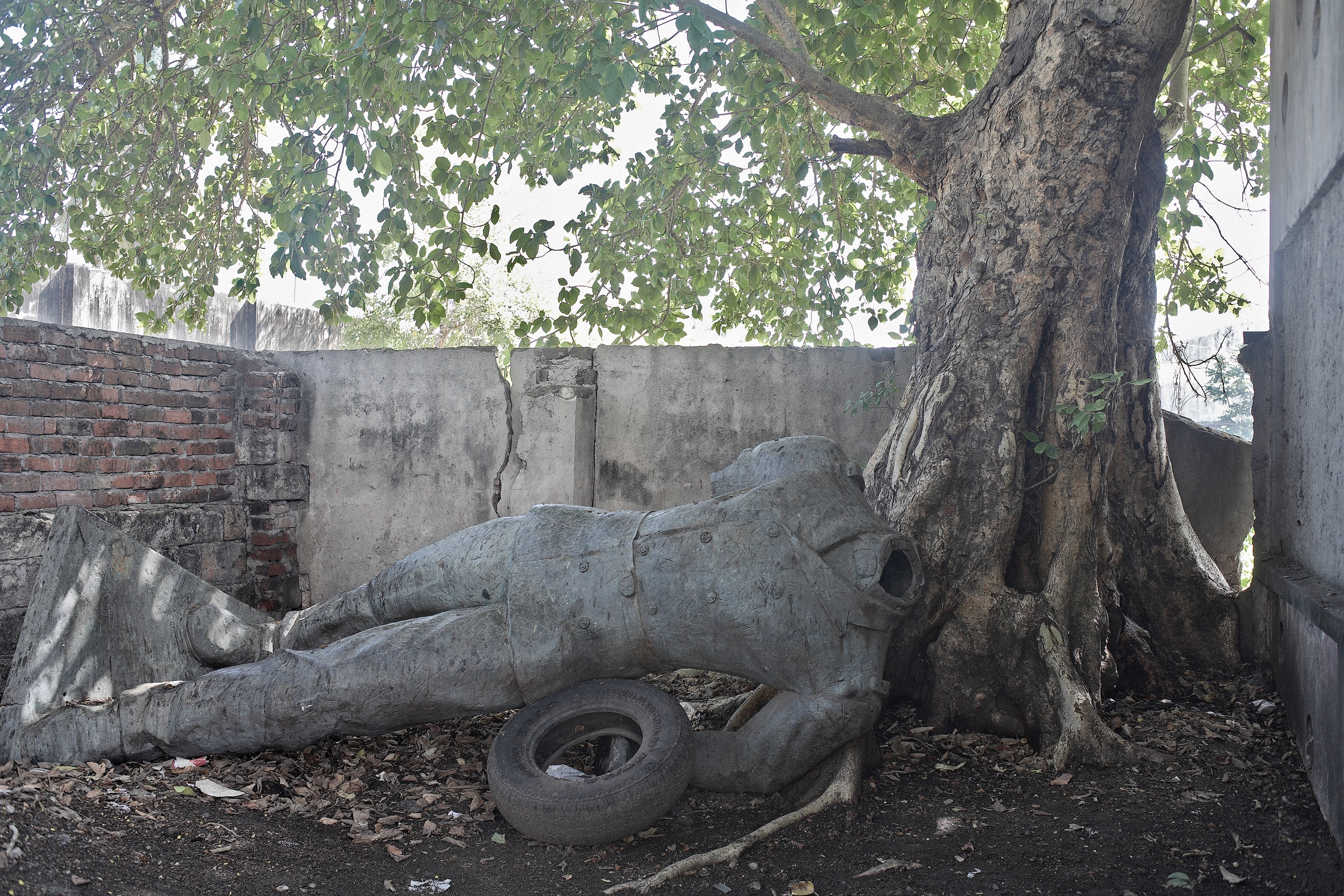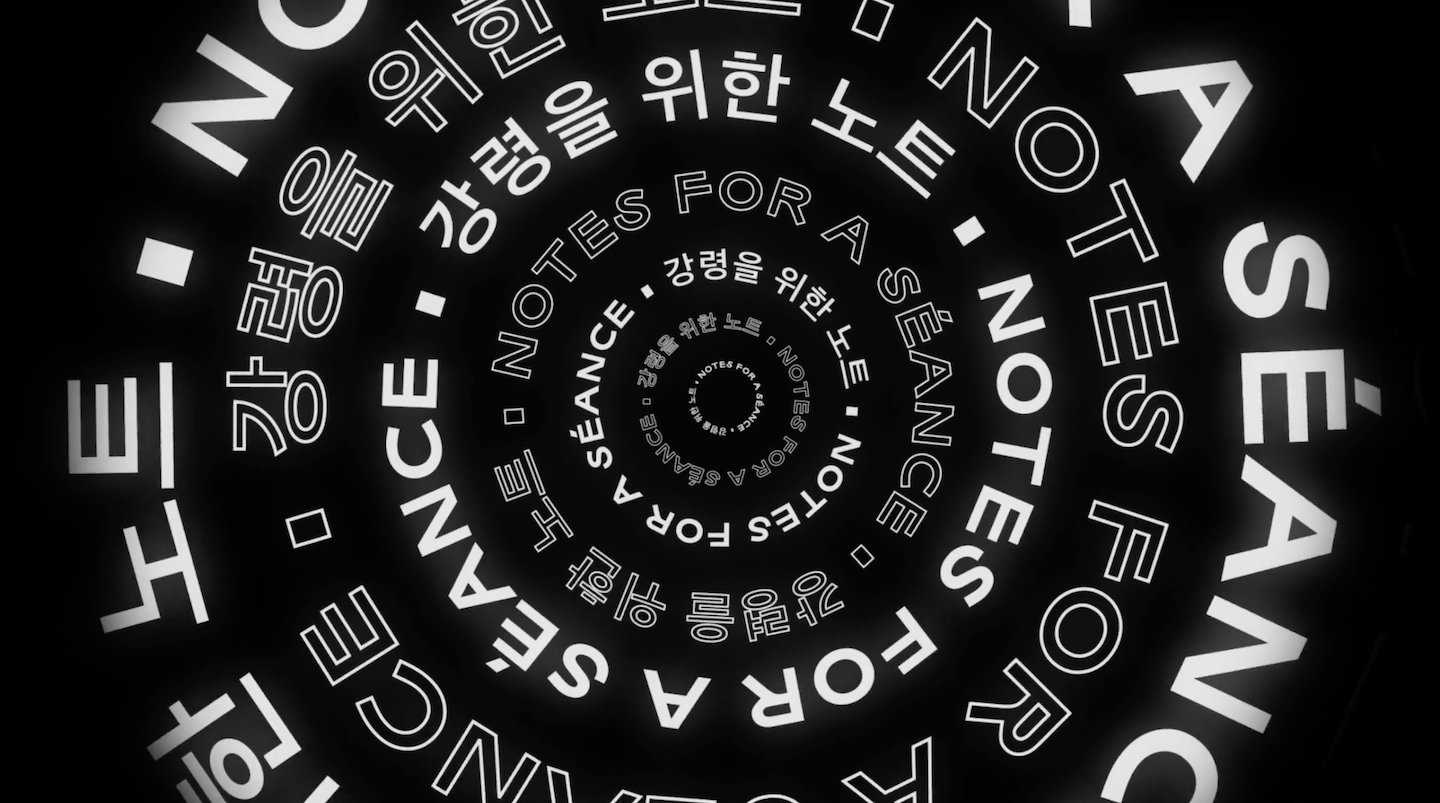This spring, Jo-ey Tang inaugurates his program as director of the Beeler Gallery at Columbus College of Art and Design. Tang arrives to Columbus, Ohio, from France, where he served as a curator at the Palais de Tokyo, in Paris, and a research resident at Villa Arson, in Nice. The first artist to direct the Beeler Gallery, Tang plans to shift the space’s approach to exhibition-making; he wants to foreground performative, discourse-based activities that prioritize welcomeness and prolonged communication between artists, writers, and students. Vanessa Thill spoke with Tang about his first season of programs, the surprising liberties of regional art centers, and his goals for forging new intimacies on local and international scales.
Vanessa Thill: What attracted you to Columbus College of Art and Design, and to Beeler Gallery specifically? What does your new role entail?
Jo-ey Tang: I was interested in coming partly because the shifts have been quite drastic from one director to the next, and I knew that I could propose a different model than the previous one, though there are strong institutional memories and histories. The Beeler Gallery was built in 1993, and since then, this space has been dedicated to showing contemporary art. It has gone through different directorships and different modes of programming. The inaugural director was Dr. Natalie Marsh. When James Voorhies (now dean of fine arts, California College of the Arts) was here, he incorporated what he called the “Bureau for Open Culture.” Then Michael Goodson (now senior curator, Wexner Center for the Arts) was here, and the Beeler Gallery was named in 2015. There’s a visiting artist and scholars lecture series that the Beeler Gallery has taken on in recent years. The diversity of the school makes for an important audience—not just fine arts, but fashion and industrial design. I think it’s interesting and maybe daring to have a school put an artist in this role, for me and for Ian Ruffino, the assistant director, as well. And we just hired a registrar who is also an artist. That allows for a kind of openness in terms of what career paths all these students might take beyond the school. None of my predecessors were practicing artists, so I think it’s time to have artists in these roles. That risk-taking of having me here to propose a new way of programming is exciting to me. So, I’m responsible for putting on an exhibition program, but I’m not going to put out exhibitions anymore—I’m not going to use the term “exhibition.”
VT: How would you describe this new model?
JT: Activating artworks in the gallery space and having artists and thinkers come to Beeler and CCAD are the two key modes of engagement, but within that it is completely open. I envision something I call “slow programming,” which will officially begin in fall 2018. We will work on a season over the course of a full academic year. The first year we are working with the collective fierce pussy, formed in New York in 1991 by four artists: Zoe Leonard, Carrie Yamaoka, Nancy Brooks Brody, and Joy Episalla. We are focusing on their personal works, not the collective work, which, believe it or not, they have never been asked to do. We are thinking about how to activate the political power of their collective work in connection with their personal work, which in large part is concerned with the idea of abstraction, whether monochrome paintings, abstract photography, dark room photography, or monochrome sculptural objects.
This kind of programming allows for different convergences of artistic and social practices. I hope it’s a kind of aperture into ways in which artists are more visible in their processes. This is really connected to the art and design school gallery and the role that institution plays in allowing those processes to be more visible. This is not an exhibition that comes in and the artists come to talk, maybe do some visits, and leave. To me that model can only serve so much. The goal is to allow other ways of engagement. We are not completely getting rid of that trajectory of someone who might only be able to come in for a day to do a talk and some studio visits, but more and more I find that approach unproductive for the visiting artists or the students. Being an artist myself, a visitor gets a lot out of their engagement with the students as well as the other way around. It’s mutually coproductive.
VT: How will this slow programming develop?
JT: The spring season is Season Zero and is titled How well do you behave? IN THE FLAT FIELD. Calling it Season Zero is a proposition for a restart. I have to say, there might be a Season 0.5 before we launch Season One in fall 2018. But, for example, in the spring, we have invited three members of fierce pussy to come for a talk. This is eight or nine months before they actually have anything visible in the Beeler Gallery. But we will begin the process of learning and engaging that is mutually beneficial to the artists and the students, because both get this time to really delve into the work. The artists and the art historian Jill H. Casid from the University of Wisconsin–Madison will introduce the works of fierce pussy, and this will serve as the basis of the convergence. And then each member of the collective will discuss another member’s work. So, a sort of constellation is built, talking often through one’s own subjectivity, which I think will be very illuminating. We are printing a stack of take-aways for the spring season. It’s a piece called Transmission III, which fierce pussy did in Artforum in 2016, reworked for 2018. In it, they speak from the future, playing with the idea of time.
VT: What drew you to Columbus? Have you spent time in other cities outside the larger art capitals?
JT: I arrived in Columbus in August, and before that I was in France for six years. There, I experienced being outside a big city for the first time. The French system has a network of art centers outside Paris, outside the center of gravity. Cities like Lyon, Nice, or, just outside Paris, Noisy-le-Sec. Every region has an art center, and each has a specialty, whether architecture or conceptual practices of a certain era, and a collection is built alongside that. They have to respond to their immediate audience, to the people in that city or region, but because they aren’t in the center, they’re more open to different types of events or exhibitions. It allows for a wider and more flexible way of programming and engaging art that’s both more local and more international.
But I had never been to Columbus before, though I had known about the Wexner for many years. I went to school in the Midwest, at Carleton College in Minnesota. The Walker Art Center was the first contemporary art space that I “walked” in! I imagined Columbus as something similar, having this very important art institution as an anchor for the city—there are a lot of cultural activities, it’s a big college town. But it’s really two artists who attracted me to Columbus: Carmen Winant and Luke Stettner. They moved here and deepened their personal artistic practices. Carmen teaches at CCAD. They’ve made a life for themselves and achieved a kind of stability these past few years, and that piqued my interest.
VT: How will students be involved in this spring’s programming?
JT: We are going to have an art book fair that will take place at Beeler from February 24 to 25, called An Art Book Affair. We are doing our own version of an art book fair, which is an entity that has proliferated at such a great speed, but Columbus hasn’t yet had one. For our version, we invited three art book fairs to come and join our own Columbus participants. The Detroit Art Book Fair will physically bring their publishers. Copenhagen’s art book fair, which is called One Thousand Books, will come with books from the Scandinavian scene and do a workshop. Mexico City’s Index Art Book Fair will bring books from the Mexican and Latin American scenes. It’s a fair of art book fairs. We invited different project spaces from Columbus: No Place Gallery, Skylab, Mint Collective, some members of Corrugate Contemporary that have a publication called SPAM. It will be a productive space for people getting together, which for me is also a way to gauge what kinds of energy would be produced by such an event and would affect programming in the future.
The week prior to the art book fair, the Scandinavian organizers will coproduce a book with a group of students in Beeler based on the idea of cryptocurrency. They are going to make the book and we will display it at the art book fair. There will be a sculptural installation, a physical manifestation of the book, and instead of having a table, they are going to build a structure for the book.
VT: How does An Art Book Affair connect to this season’s other programs?
JT: How well do you behave? IN THE FLAT FIELD. will bring together exhibition posters and postcards from different art and design schools from different parts of the world. The focus is on a particular moment in a school’s history and how design arises from it. We have posters from Portikus, which is connected to Städelschule, in Frankfurt. In the early years of Portikus, every poster from the institution had a representation of the architectural elements of the portico façade of the building produced by the artists themselves. We are focusing on those early years, and then including a recent poster by Jana Euler, who used the floor plan of the current site as the image and spray-painted around it. From the Cranbrook Academy of Art, we are focusing on a series of posters from the 1970s and 1980s by Katherine McCoy that promoted different departments of the school. They haven’t been shown together before.
At the art center situated within Villa Arson, the art school in Nice, they did exhibitions with Americans that were instrumental in introducing those artists to France and Europe. We have a Sturtevant catalog cover, a holiday card from Paul McCarthy, a Robert Barry poster in the form of a calendar. And from ÉCAL (École cantonale d’art de Lausanne), we took the stock from the in-house printing lab they built when they moved into their new building ten years ago, acknowledging that moment in using these cards that had been discolored because of the way they were stacked in the room. We can look at what is thought of as promotion. What is interesting to me is to show not only the information about who is introducing and what is being introduced but also the choice of what is included.
VT: Speaking of promotion, I’m curious about your role working with local artists and working internationally. Smaller cities’ museums may focus on a local identity but often import outside talent. Are there ways of complicating this structure that seems detrimental to work being done regionally? Do you see your role in Columbus as also working with artists beyond Beeler to promote them internationally?
JT: Those are all really pertinent questions. The first thing that comes to mind is because of my interest in emerging artists in other countries, I see my role as a conduit into those scenes that might take longer to arise here. A gallery in an art and design school can short-circuit and reroute those trajectories, that kind of hierarchy in the CV-building market. An academic gallery can do that much more easily than a big art center.
VT: Is that because your choices are not as connected to the market?
JT: Because of the autonomy of the programming here, I get to decide for myself. We can skip over those obstacles. With the program this spring, it’s so useful to go back to those art school posters and printed matter and see the kinds of programming that had been in place in those contexts. Elements of picking up artists who wouldn’t be in a museum setting in those countries are evident.
To answer the question about engaging with local artists, I think the word “local” might be less appropriate for me—that’s not to say artists here aren’t important but I don’t want to establish a hierarchy between local and nonlocal; instead, I want to engage as much as we can equally. Even though of course it’s easier to work with someone you can have a meeting with—there are benefits to that—but I’m also hoping to become a bridge for emerging artists who have been out of school to the environment where they can continue to pursue their work. I want to have the nimble quality of a project space but also offer the kind of full programming of an art center with the scholarship of a museum. All those things interest me.
In a city like Columbus, the writing about art or exhibition reviews is not as strong or voluminous as in other cities. I’m working to dispel this need for exhibition reviews as a way to validate Beeler Gallery by inviting writers—who could often be artists—to write and reflect on what they see and experience and hear, as a kind of a postscript. That will be published in a downloadable pdf when the season is over. We will be generating our own writing and reflecting on what has occurred. The writing doesn’t come before as a kind of promotion. There will be a short text, but the writing that goes deeply into the season will come after.
We are working with writers who will allow us another entryway into the past. Writers Yin Ho and James Payne will each reflect on two or three events and write entries. Jennifer Teets will do a postscript of her own event, which deals with ficto-critique, materialism, and tone. She is interviewing Dodie Bellamy, Michaël Van den Abeele, and Gean Moreno. But this is one of the elements of the season that I am leaving open, so that writers might emerge during the season through encounters. I believe it is important not to plan it all out, so to allow for what might be seen as a “target audience” to emerge, rather than a “targeted” one. The nature of the season and the programming is not static, and by extension, hopefully we will be able to engage with students who are writing and thinking about art and have that be another way through which we can publish.
VT: This seems to indicate a shift in the types of activities allowed within a gallery space. Along those lines, what are your main goals for Beeler’s programming?JT: I want to allow for a kind of reconfiguration of how we view artists’ practices. Thinking about fierce pussy: they all have their personal practices and they had been working and exhibiting collectively, but there is this blind spot. Some of this is right out in the open—the kind of invisible web of activities that are motored to artists’ practices and their cultural, artistic life-work. That is one thing that I’m really interested in. Another is the kind of kinship between artists. In 2015, when Nancy Brooks Brody was cocurating with Jonathan Berger a show of work by her late friend David Nelson at New York University’s 80WSE gallery, I had already started to work with the individual members of fierce pussy, and we wanted to find a way to learn how to work together individually and one on one. I was curious if Nancy had ever shown with David, who had passed away a few years earlier. It turned out they had never shown together, but they had always talked about it. It’s about going back to the wishes of the artists and listening to them. Allowing their wishes to be heard, not the institution’s wishes, or mine. And if you are willing to ask these questions, artists are ready to tell you.
—Vanessa Thill

